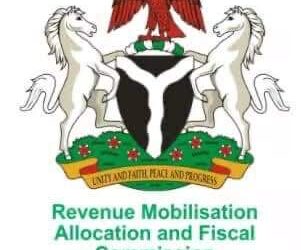Economic growth, referred to as the Gross Domestic Product (GDP) grew by 2.6 per cent Year-on-Year (Y-o-Y) in the last quarter of 2019, limping from the 2.3 per cent it stood at the third quarter of last year.
The fourth quarter performance brings the full year economic growth to 2.3 per cent.
Analysts say, what is is uninspiring about the growth is that it drew its strength from the oil sector, after much effort to diversify to the non-oil sector.
The oil sector rose 2.3 per cent from 1.9 per cent in the previous quarter, supported by the agriculture and ICT sub-sectors. In the oil sector, growth was upbeat but slightly moderated to 6.4 per cent (vs. 6.5 per cent in the third quarter as oil production fell by 40,000bpd to 2.0mb/d.
The performance in fourth quarter 2019 brings full year: 2019 economic growth rate to 2.3 per cent, an improvement from 1.9% in 2018 and over our revised forecast of 2.2 per cent. Considering that growth is still short of long-term and population growth rates of 7.1 per cent and 2.7 per cent.
The oil sector increased its contribution to growth in 2019, expanding 4.6 per cent from 1.0 per cent in 2018, following stability in the Niger-Delta and new output from the EGINA FPSO. In this regard, oil production rose 5.0 per cent to an average of 2.0mb/d in 2019. The non-oil sector remained the major driver of growth as it improved 2.1 per cent in 2019, although this was little changed from 2.0 per cent in 2018. Aside the ICT and agriculture sectors, there was a broad-based underperformance in major sub-sectors. In our view, this suggests that the economic recovery would continue at a sluggish pace without the implementation of reforms and market-friendly policies.
The underlying reasons for the sluggish performance of the non-oil sub-sectors buttress our point. In the services sector, there was a faster expansion of 2.6 per cent Y-o-Y in Q4 2019 from 1.9 per cent in the previous quarter while growth was 2.2 per cent in FY 2019 from 1.8 per cent in 2018.
While the ICT sector sustained its remarkable expansion, the trade and real estate sectors (22.1 per cent of GDP) remained in a recession, although somewhat improving.
“In our view, the unfriendly trade policies of the government continues to affect the pace of recovery. In the real estate sector, aside the weak macroeconomic environment, poor investment in housing, the lack of flexible regulations around land use and registration and expensive and slow approvals of building permits are critical factors”, said analysts at Afrinvest.
In the agriculture sector, growth was faster at 2.4 per cent in 2019 from 2.1 per cent in 2018, but weaker than its long-term average of 3-4.0 per cent. Beyond cheap credit, there has been little progress towards boosting agriculture yields, helping farmers adapt to a changing climate and curbing insecurity. In manufacturing, the weakness in consumer purchasing power remains the major theme as growth slowed to 0.8 per cent in 2019 from 2.1% in 2018. On the other hand, the financial services sector surged 22.3% in Q4:2019, the highest growth recorded in a quarter. Similarly, the sector grew faster at 2.4% in 2019 from 1.4 per cent in 2018.
“We suspect this was driven by the raft of policies rolled out by the CBN in H2:2019, particularly the Loan-to-deposit ratio increase. We retain our growth forecast of 2.4 per cent for 2020 as we do expect significant improvements”, said Afrinvest.
Real GDP grew at 2.6 per cent Y-o-Y in Q4:2019 from 2.3 per cent in the previous quarter and higher than our forecast of 2.4 per cent.
The performance in Q4:2019 brings FY:2019 economic growth rate to 2.3%, an improvement from 1.9% in 2018 and over our revised forecast of 2.2 per cent.
The non-oil sector remained the ma- jor driver of growth as it improved 2.1 per cent in 2019, although this was little changed from 2.0 per cent in 2018.



